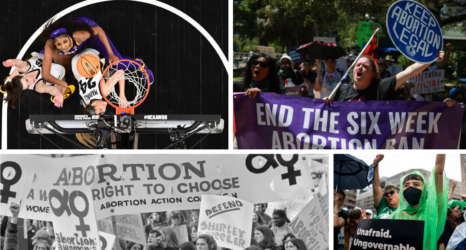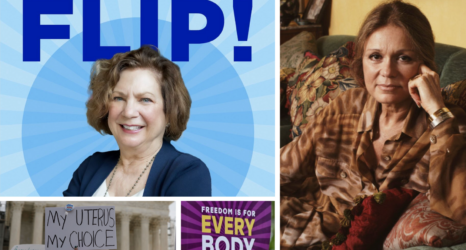A new report by the Women’s Media Center (WMC) finds that women of color represent just 7.95 percent of print newsroom staff, 12.6 percent of local TV news staff and 6.2 percent of local radio staff in the U.S.—and still face challenges breaking into the news media industry and rising up the ranks once they do.
“Women are more than half the U.S. population, and people of color nearly 40 percent,” WMC president Julie Burton said in a press release. “But you wouldn’t know this from our media—because U.S. media does not look like, sound like, or reflect the diversity and experience of more than half the population.”
The report, “The Status of Women of Color in the U.S. News Media 2018,” expands on data derived from industry research on gender and race by the American Society of News Editors and the Radio Television Digital News Association with testimonies from women of color within news media—including journalist and author Dana Canedy, the first black female and youngest person to helm the Pulitzer Prize organization; pundits and broadcast journalists like Soledad O’Brien, Ann Curry, Maria Hinojosa and Joy Reid; and MacArthur “genius grant” winner Nikole Hannah-Jones, among others.
Those interviewed for the report spoke frankly about the challenges they’ve faced. “There are so many micro-aggressions that come with being a journalist and female and not White,” Soledad O’Brien, founder and CEO of Starfish Media Group, told researchers. “If you spend too much time seeing yourself—in terms of how they see you—as only those things, you will lose your mind. Because there are just a lot of slights.”
WMC’s eye-opening and groundbreaking report comes on the heels of the anniversary of another: The Kerner Commission Report, released in 1968 in the wake of the 1967 race riots across the country. The Kerner report spotlighted the media’s failure to adequately and accurately report on racial injustice and the absence of people of color reporters, citing both issues as factors in the spread of media misinformation and lower rates of news consumption in the black community. Among the concluding statements in the Kerner report was its most famous—and ominous—declaration. “Our nation is moving toward two societies,” the Kerner commission declared, “one black, one white—separate and unequal.”
The findings of WMC’s research demonstrate that the news media did not take heed their warning. 50 years later, the legacy of racial—and gender—segregation in the media endures. “Fifty years after the Kerner Commission report, women of color are still battling systemic racism and sexism in the news media,” Pat Mitchell, WMC board co-chair, said in a statement. “It is imperative that Black, Asian, Hispanic and Native women be more visible and powerful in media. The Women’s Media Center won’t rest until our newsrooms are inclusive, representative and equal.”
The need for a diversity and wealth of perspectives and experiences in journalism is just as critical today as it was in 1968. The Trump administration has levied consistent attacks on women’s rights and civil rights over the last year, and the president himself has taken considerable efforts to censor and impede news outlets who sound the alarm. Without the presence of women, and particularly women of color, in newsrooms, reporting on these critical issues will continue to be controlled by and reflective of the perspectives of mostly white men. And in a nation where it is projected that, by 2020, people of color and multi-racial folks will be a majority of the population, a lack of media diversity inevitably causes a disconnect between the work of journalists and the experiences of their readers.
Gloria Steinem, co-founder of both The Women’s Media Center and Ms., put it best in a statement: “Missing women of color in the newsrooms of this country is an injustice in itself, and an injustice to every American reader and viewer who is deprived of great stories and a full range of facts. Inclusiveness in the newsroom means inclusiveness in the news. Racism and sexism put blinders on everyone.”





